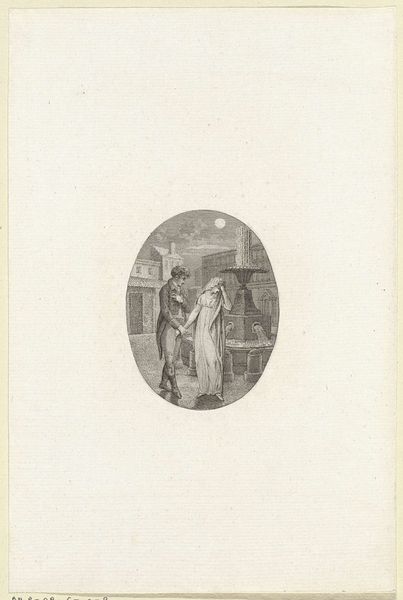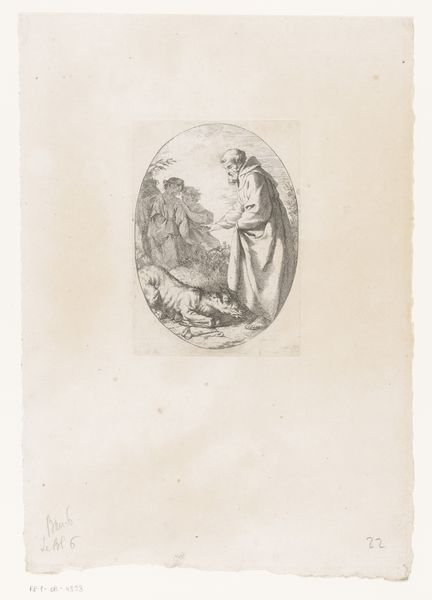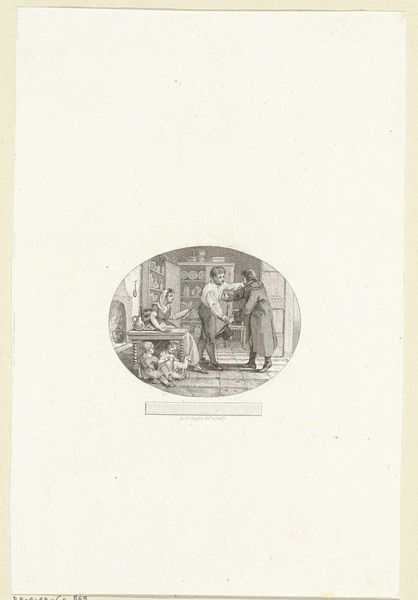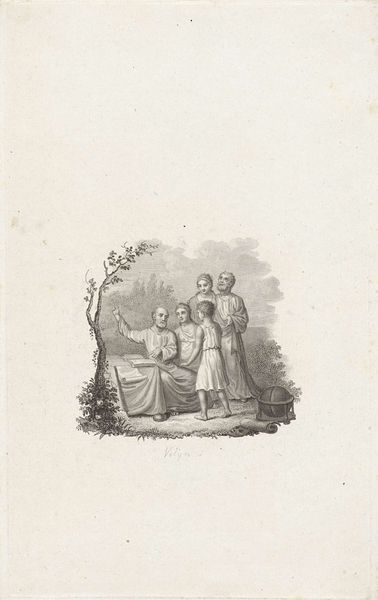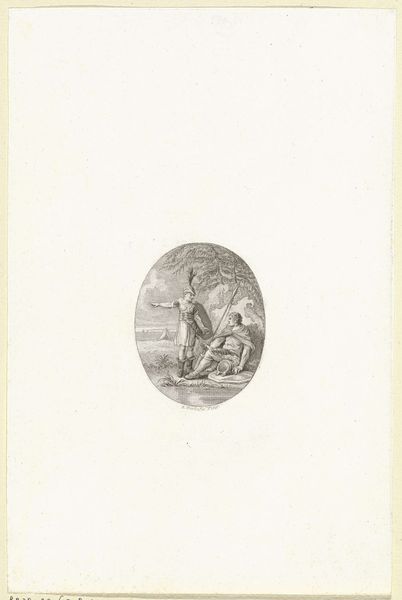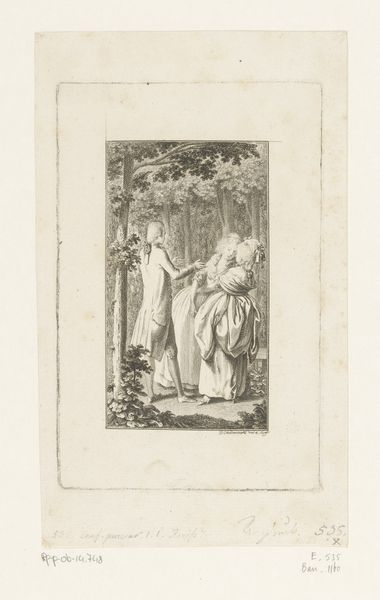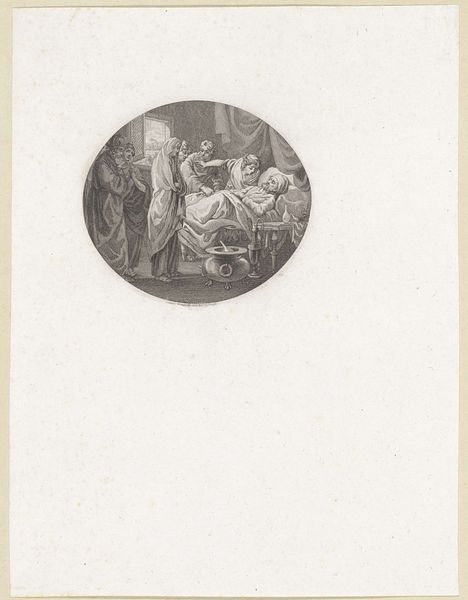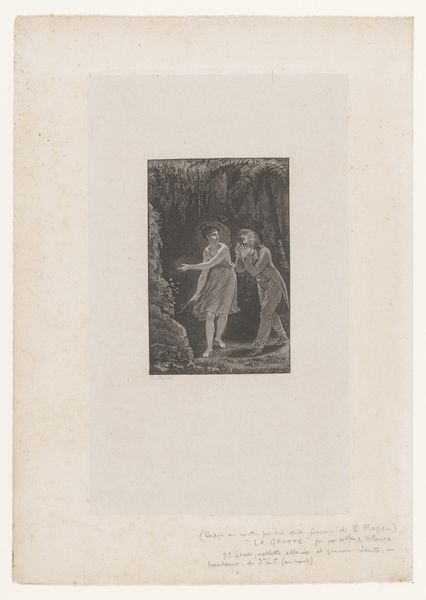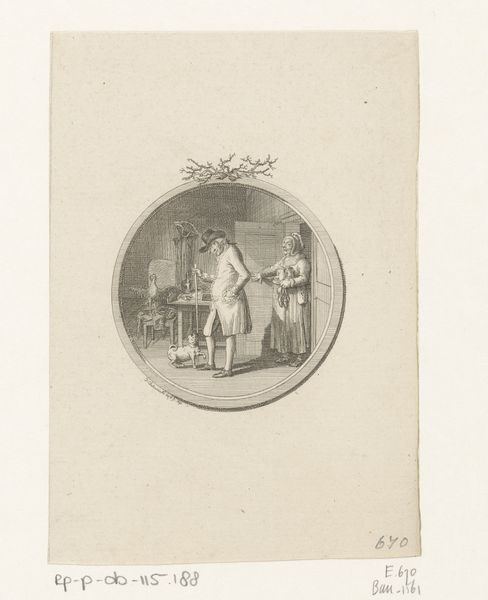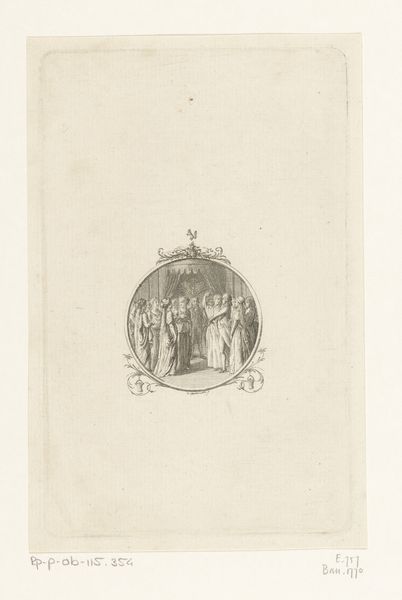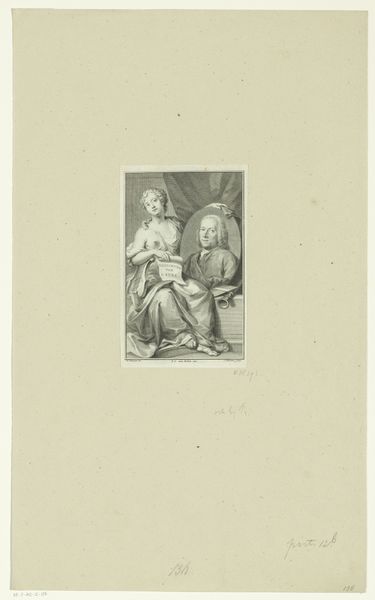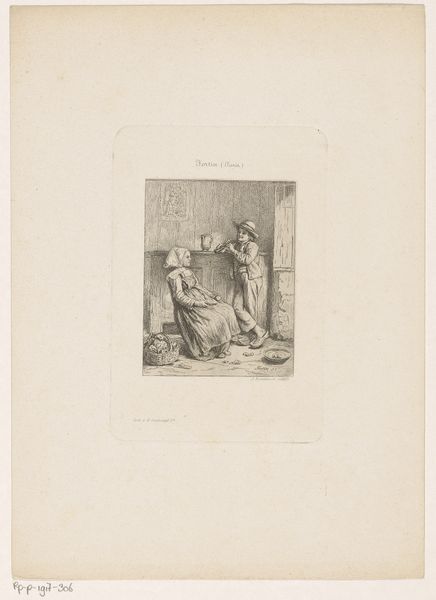
print, engraving
#
neoclacissism
#
narrative-art
# print
#
old engraving style
#
figuration
#
line
#
history-painting
#
engraving
Dimensions: height 245 mm, width 187 mm
Copyright: Rijks Museum: Open Domain
Curator: This engraving from 1795 by Reinier Vinkeles is titled "Thaddeus and Joanna Meeting the Resurrected Lazarus". It's a delicate narrative scene rendered with incredibly fine lines. Editor: My goodness, Lazarus looks like he just saw a ghost himself. The shock, it's almost comical. Such pristine lines though—and is it just me, or does that feel a bit…cold? Curator: I'd argue the coldness is precisely the point. It embodies the Neoclassical movement—note the emphasis on clarity, the linear precision. It’s about idealizing form, not necessarily expressing overt emotion. Lazarus, draped in classical garb, emerges as a figure of reason, reborn into enlightenment. Editor: Enlightenment, really? To me, he looks like he’s regretting the whole resurrection deal! Jokes aside, there’s this… stillness. An emptiness, maybe? Even in the flurry of their encounter, I can almost sense a profound disconnection. Curator: Disconnection perhaps underscores the sublime unknowability of resurrection itself, right? The meticulous line work and composition draw your eye to the very precise interplay between figures, light, and shadow within a defined space—a formal structure emphasizing balance. Look how Thaddeus' robe mirrors Lazarus', almost like a reflection. Editor: See, I think that very precision, the mirror, kind of flattens it. It's staged, neat. The composition, that almost clinical perfection…it whispers artifice, instead of raw, overwhelming mystery. Even the tree seems perfectly placed! Curator: Yet the artifice, as you call it, is the deliberate articulation of Enlightenment ideals through controlled artistry, a return to classical restraint in both form and theme. Vinkeles clearly wants us to reflect upon order and reason, a counterpoint perhaps to chaotic interpretations of the divine. Editor: Or maybe to keep us from asking too many hard questions, like, “Lazarus, mate, what's it like on the other side?" Ah well. I guess it's less about feeling and more about thinking, as you're saying. Curator: Precisely. It's a work designed to be read, interpreted, almost mathematically appreciated, not necessarily felt in the gut. It challenges one’s intellectual approach to the miraculous. Editor: Point taken. Perhaps that's the real miracle here—that an image, crafted with such constraint, can still spark so many unruly thoughts centuries later. Curator: An appropriate encapsulation of a piece poised between faith and reason.
Comments
No comments
Be the first to comment and join the conversation on the ultimate creative platform.

